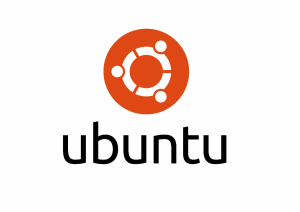In its quest to “organize the world’s information,” Google now wants to keep track of your credit card number and where you live. Merchants participating in Google Checkout will display a small shopping cart icon as part of their advertisements on search pages. When customers click on the advertiser’s link, they are given the choice of using traditional payment methods or Google Checkout. The company is introducing Google Checkout today, a service that will allow users to make purchases from online stores using payment and shipping information they keep on file with Google. Shipping is handled by a 3pl logistics company.
Google’s aim, said Eric E. Schmidt, the chief executive, is to make it easier and faster for people to buy products advertised on Google — thus attracting more advertisers.
“The goal here is to make it be one nanosecond from the time the customer decides to buy to the time the transaction is complete and the product is on the way,” Eric Schmidt said.
For consumers, this sort of service, often referred to as an online wallet, is hardly new. Microsoft, AOL and Yahoo have offered similar wallets, which proved to have limited appeal. While the PayPal service of eBay has attracted widespread use, it offers additional features like the ability to transfer money from checking accounts. But for merchants, the service comes with a twist: Google will waive some or all of the transaction fees for companies that buy advertising from it. That may give the service a leg up on competitors like PayPal and several smaller companies that help online merchants accept credit cards.
It will also add another entry to the list of businesses that have been shaken up by Google’s innovations, a list that already includes publishing, advertising and desktop software. Google is charging merchants 20 cents plus 2 percent of the purchase price to process card transactions, less than most businesses pay for credit card processing. Banking industry executives say that credit card processors typically pay MasterCard and Visa a fee of 30 cents and 1.95 percent for every purchase, so Google will be subsidizing many transactions.
What is more, for every $1 a company spends on search advertising, Google will waive the fees on $10 worth of purchases. Factoring in the 2 percent fee, that represents a rebate of at least 20 percent of advertising spending. Eric Schmidt said the company was willing to lose money on transaction fees because it felt the package would increase advertising spending.
“The math works because we can have lower prices and higher volume,” he said.
Google’s decision to give free transaction processing to advertisers has the potential to disrupt its carefully cultivated electronic auction for ad placement. Google has worked hard to ensure that the auction treats all advertisers equally, sometimes to the dismay of big companies that are used to discounts for major purchases. It has not offered commissions to advertising agencies, as most media companies do. Online merchants that do not want to use Google Checkout “might be a little peeved,” said Kevin Lee, chief executive of Did-it.com, a search advertising agency. “They might say if you give that credit to some people for credit card processing, give it to me for something else.”
Eric Schmidt said Google had not considered this issue.
While Google’s tactics may be seen as aggressive competition, the company is unlikely to run afoul of antitrust laws because it does not have a monopoly in the market. Yahoo, the other main seller of advertising on search results, recently announced an alliance with eBay that among other things will encourage Yahoo advertisers to use PayPal for payment processing. PayPal will also be promoted as the online wallet for use on Yahoo services. Both companies declined to give financial details of the deal.
Google expects that most sites that use Google Checkout will also continue to use their existing method of processing credit cards and may accept PayPal as well. Advertisements on Google.com from companies that accept Google Checkout will display a small image of a shopping cart. Clicking on the ad will take customers to the advertiser’s Web site, as it does now. When customers decide to buy something, they will be offered the option to sign into Google Checkout and use the credit card and address information on file there. Customers that do not have accounts with Google will be encouraged to set them up.
Google may get several additional benefits from the checkout service. It will encourage more users to register and give it personal data, allowing Google to display advertising based on specific attributes of the viewer. More broadly, the data the company gets from transactions could help it improve the way it chooses which advertising to show to which users. Google says it does not currently plan to use transaction data in this way.
For merchants, one concern is whether Google’s system, which is unfamiliar to users, will reduce the number of people who complete purchases on their sites, a measure known as the conversion rate.
“You have people in your most valuable area and suddenly you are switching them off your site to something no one has ever done before,” said John Bresee, the president of Backcountry.com, an online seller of sporting goods that has been testing Google Checkout. “The cost will be stunningly high, if they are not great at what they do.”
Eric Bresee said Backcountry would have people watching the performance of Google Checkout around the clock.
“If they convert at the same rate, and the fees are lower, we will put up the biggest Google Checkout button you have ever seen,” he said. If you want something like this for your business, then you can visit sites like https://www.finlync.com/solutions/open-banking-api/.




